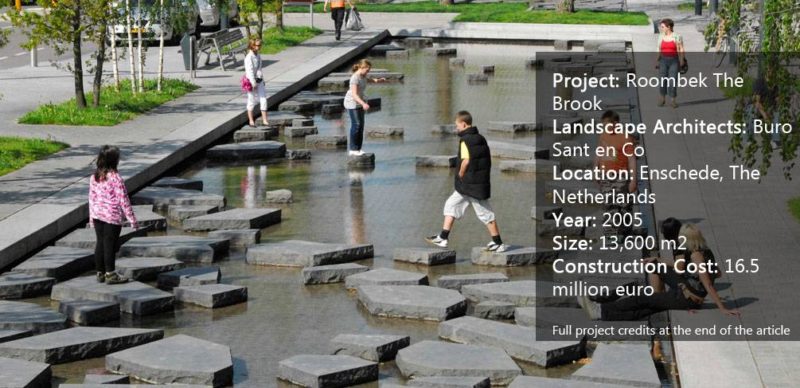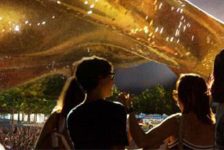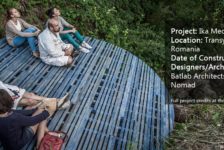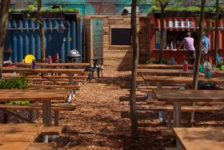Article by Amela Đurakovac Roombeek The Brook, by Buro Sant en Co, in Enschede, The Netherlands Streets are one of the most important elements in any city, not only because they bring together different parts of the settlement, but also because they connect the series of events that are important for residents. Streets are the places where we live, work, and play. There are different types of streets that can be divided on the basis of exposure, location, length and width, significance of the presence of green areas, and — most importantly — the people and their presence. The social role of a street is exactly that – the option of meeting or organizing social life and allowing residents to feel safe and to contribute to the quality of the city. So what makes a successful urban street? One that is visually and functionally appropriate to its users. Can a street emulate nature, restore life in the urban center, and completely change our idea of a city roadway? Oh, yes indeed!
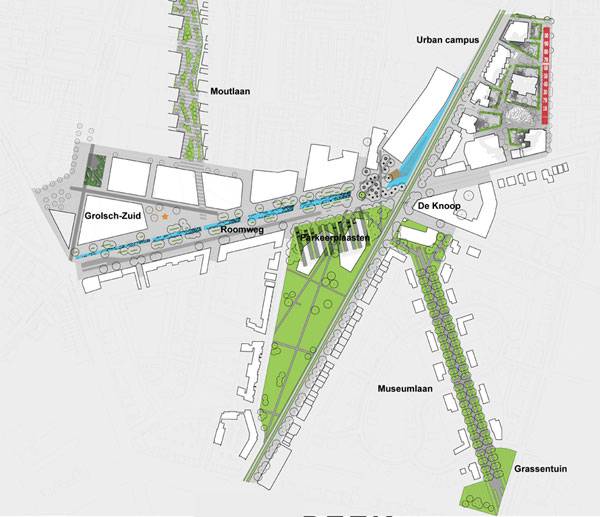
Roombeek The Brook. Image courtesy of Buro Sant en Co
Roombeek The Brook by Buro Sant en Co
Old for New: Bringing Back the City River In the city Enschede in The Netherlands, you can see an example of this kind of street. This street is a central point of the city, and thanks to its design, it also draws attention to one of the most important elements of the city — The Roombeek River.
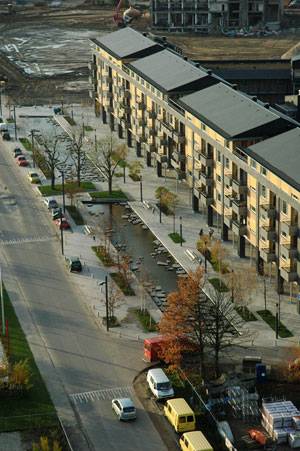
Roombeek The Brook. Image courtesy of Buro Sant en Co
Many years ago, this city was the place with the highest number of streams in The Netherlands — including the Roombeek – but those waterways were largely contaminated due to increased industrialization. In addition, the construction of a large house hid the river from public view. City officials wanted to clean up the river and restore its public persona. The plan for urban reconstruction was defined by long lines that have a distinctive character. The lines follow the original draft of the village and connect the space with surrounding neighborhoods.
Creating a Micro-Relief The river is visible in many parts of the city and also is represented through the central part of the adjacent street, in the form of water line elements in an asymmetrical design, creating a micro-relief. The water in the street has different dimensions in some parts, in order to fully demonstrate the character of the river.
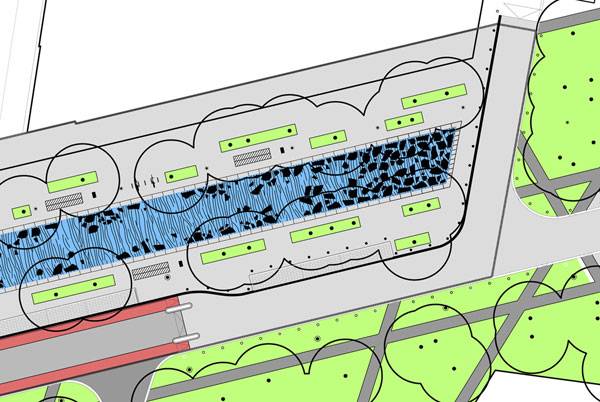
Roombeek The Brook. Image courtesy of Buro Sant en Co
Over the water are cracked, artificial stones similar to those found in the stream. They are of various dimensions and shapes, and they really look amazing! They are placed organically, without too much processing, so that they more resemble real stones that can be found along the river.
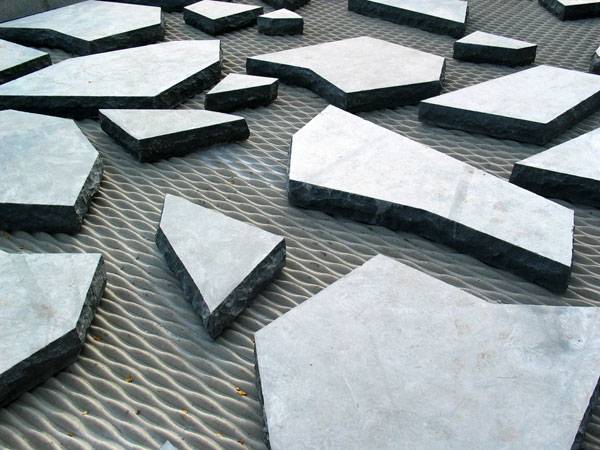
Roombeek The Brook. Image courtesy of Buro Sant en Co
In addition, these stones reflect the incredible pattern in all seasons. In summer, they reflect sun rays and in winter, the white color arising from the snow only further emphasizes the surface of the stones. The stones are also symbolic of an accident at a fireworks factory that happened here years ago. The presence of water also has a calming effect.
Functionality and Beauty This water surface brook is not only designed to become a city symbol and a part of the urban environment, but also plays a role in the reduction of the flow of water. The bottom of the brook is designed as a special shape — transverse ribbed, with concrete structure — that causes constant movement of the floor and water surface. Lined around this water surface are deciduous trees, with interesting bark and leaf color, urban furniture such as benches and trash bins, and interesting paving.
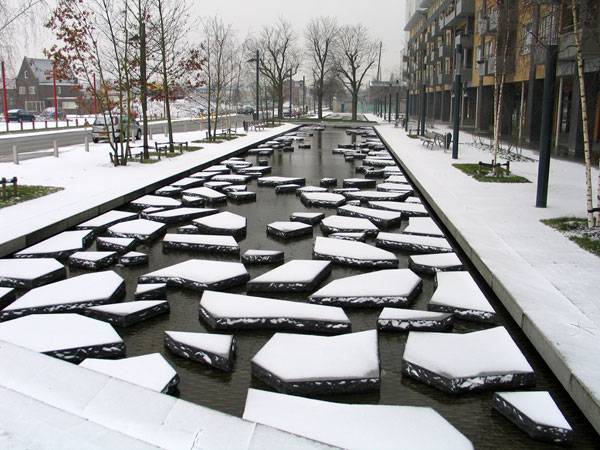
Roombeek The Brook. Image courtesy of Buro Sant en Co
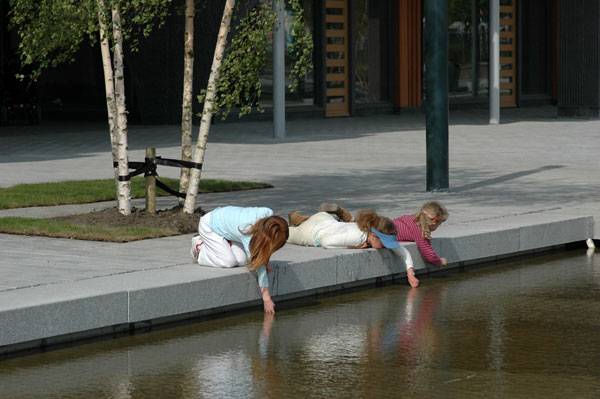
Roombeek The Brook. Image courtesy of Buro Sant en Co
All of these elements together form a street with visual identity and a sense of place, with recognizable structure. Functionality, sustainability, the spirit of the place, and the central point of socialization — yes, that is Roombek The Brook street.
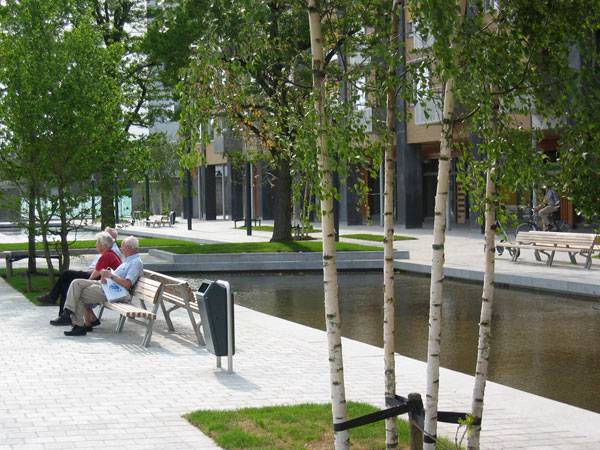
Roombeek The Brook. Image courtesy of Buro Sant en Co
Good cities and towns require good streets. Because of that, it is very important that streets are no longer just places that lead to certain points, but also are places where residents can feel safe and where they want to spend time. With new technologies in design, they also become places that promote ecology and sustainable development. These are all important things that we should pay attention to when we create new city streets.
Roombeek The Brook street is one example of how local natural elements, such as water, can be implemented in the urban area very successfully. Merging certain characteristics of the location or its environment can really be of great importance for the birth of new ideas when planning an urban area.
What what do you think of this project? Let us know in the comments section below! Go to comments 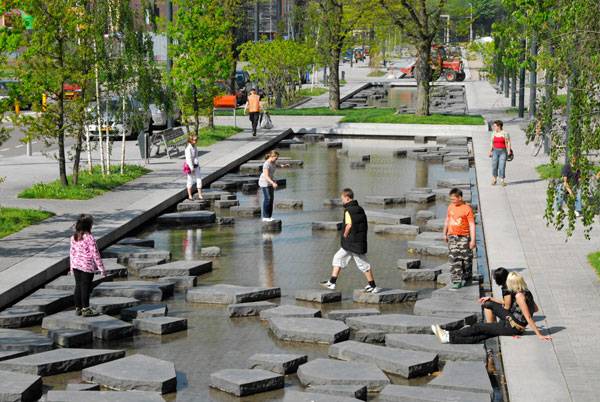
Roombeek The Brook. Image courtesy of Buro Sant en Co
Full Project Credits For Roombeek The Brook:
Project Name: Roombeek The Brook Landscape Architects: Buro Sant en Co Location: Enschede, The Netherlands Date of Construction: Design: 2003; Implementation period: 2005 Size: 13,600 m2 Construction Cost: 16.5 million euro Client: Municipality of Enschede Learn more about Buro Sant en Co: Website: www.santenco.nl Twitter: www.twitter.com/santenco Recommended Reading:
Article by Amela Đurakovac Return to Homepage
Published in Blog










